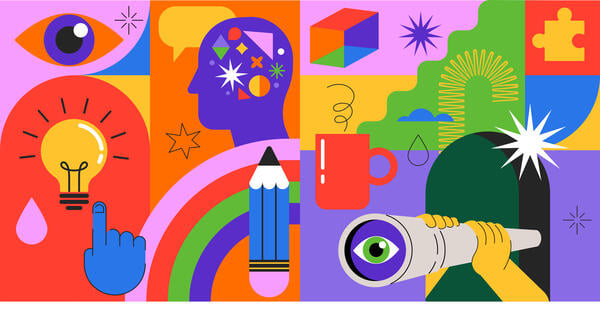
In Light of AI, a Creative Alternative to Essays (opinion)
For decades now, professors have been complaining about the futility of asking students to write term papers, otherwise known as a research paper. In theory, research papers teach students how to gather a large body of information, weigh conflicting interpretations and come up with their own ideas about the subject, all while honing their writing skills.
But the reality is very different. The prose is usually terrible and the ideas a bad rehash of class lectures. Grading these essays is pure torture. Anecdotally, I’ve heard many say that evaluating papers is the worst part of teaching. If Dante had known about grading, he would have added a new circle of hell where the damned have to grade one bad paper after another for all eternity.
And now we have AI, or “artificial intelligence,” in the form of ChatGPT, Grok, Gemini and a host of other platforms. Submit a prompt, and these programs spit out an essay that, aside from the occasional hallucination, is actually pretty good. Grammatical mistakes are rare; there’s a thesis, evidence and organization.
Even worse, using AI for schoolwork is rampant in both K–12 and higher ed. As James D. Walsh puts it in his now-infamous New York magazine article, “Everyone Is Cheating Their Way Through College.” And it’s nearly impossible to catch cheaters, especially now that the airless, robotic prose that’s often a marker of an AI-written essay can be masked by programs that promise to “unlock truly human-like AI text.”
What to do? If you have a large class, interviewing students about their essays to ensure they didn’t use AI is impractical, and randomly choosing students to interview could lead to charges of bias. Besides, suspecting everyone of plagiarism destroys the class atmosphere.
Many have gone back to handwritten exams and in-class writing assignments. But grading a pile of blue books is as agonizingly tedious as a pile of papers.
My solution has been to replace the final research paper with a creative project.
Instead of a detailed prompt or instructions, I give my students very wide latitude to do, as the phrase goes, whatever floats their boat. Nonetheless, I still set a few parameters. They have to tell me several weeks in advance what they have in mind. They can’t take a piece of paper, draw a line across it and say, “Behold: my interpretation of Hamlet.”
I have only two hard rules: The project must reflect a good-faith effort to interpret something we’ve read in class, and they have to hand in a brief description of what they tried to accomplish. For those willing (most are), the students present their projects to the class during the period allotted for the final exam. Other than that, they do what they want—and I’ve gotten amazing results.
When I was teaching the literature of terrorism, one student happened to be going to New York for spring break, so she went to the Sept. 11 memorial and interviewed people. Another student composed a rock opera based on Thomas Kyd’s Elizabethan play The Spanish Tragedy. A group put together a postapocalyptic performance of King Lear on the heath, using the university’s loading docks for their stage. I’ve gotten raps, short stories, children’s books, parodies performed and written, musical compositions, and paintings.
For example, a student produced this project for my last Shakespeare class (reproduced with the student’s permission):

Created by Teresa Cousillas Lema
This pencil drawing represents the student’s response to Al Pacino’s delivery of Shylock’s “Hath not a Jew” speech in Michael Radford’s 2004 film, The Merchant of Venice. The three images represent the different emotions Shylock displayed over the course of his speech: rage, sadness, determination.
For the background, this student wrote out Shylock’s speech, thereby committing it (she told me) to memory. But this project represents more than a pretty picture: It demonstrates a profound response to Shakespeare’s words and Pacino’s delivery of them.
This project accomplished nearly the same goals a term paper is supposed to accomplish: reflecting on the material and responding to the play both emotionally and intellectually. As a final payoff, while most students forget about their term papers seconds after they submit them, I’m guessing this student will remember this one and carry forward a deep appreciation of Shakespeare.
Granted, switching to creative projects does not entirely eliminate the possibility of using AI to cheat. Students could still resort to AI if they want to produce anything that involves writing (e.g., a screenplay or a short story), or, for visual projects, they could use an AI art generator. But the opportunity to create something they’re invested in, as opposed to responding to the professor’s essay topics, reduces the incentive to not do the work. The project is something the student wants to do rather than something they have to do.
Yet there is something lost. When the creative project replaces the research paper, students will not have the experience of sorting through multiple and contradictory interpretations. They won’t learn about literary theory and different approaches to literature. And they won’t learn how to write critical prose.
In short, in my discipline, replacing the research paper with a creative project means moving away from teaching English majors how to be literary critics, and that’s not small. It means reorienting the undergraduate English major away from preparing our best students for graduate school and more toward historically informed response.
Nonetheless, it makes no sense to continue with an evaluation method that just about everybody agrees has long since lost its value. So I suggest abandoning the essay for another method that not only accomplishes nearly the same aims but, in the end, brings joy to both student and teacher.
Source link



